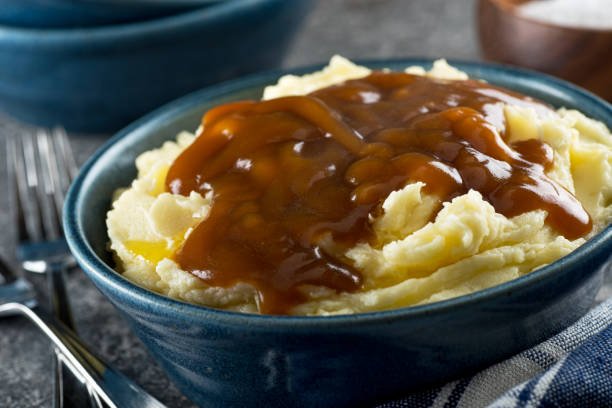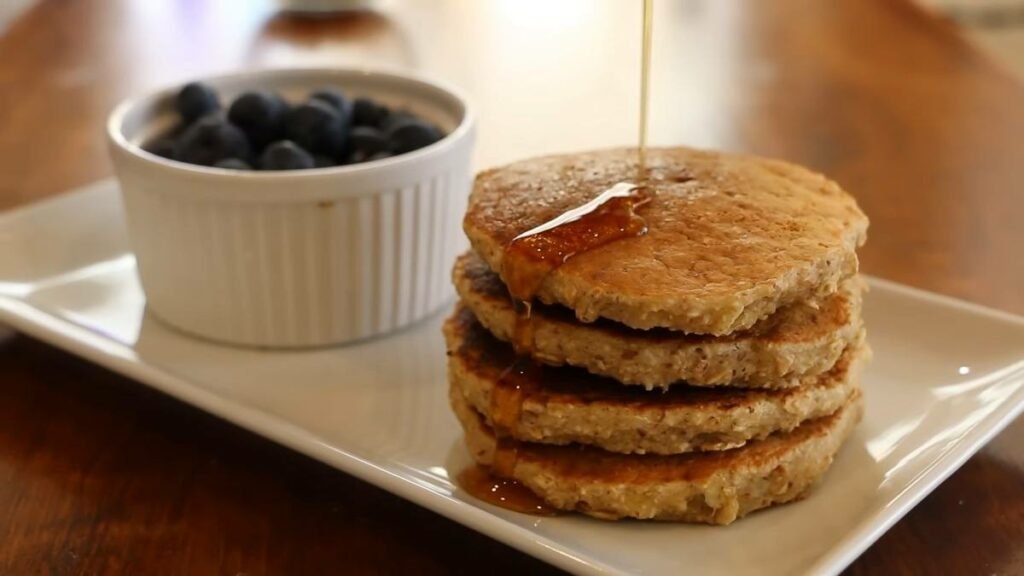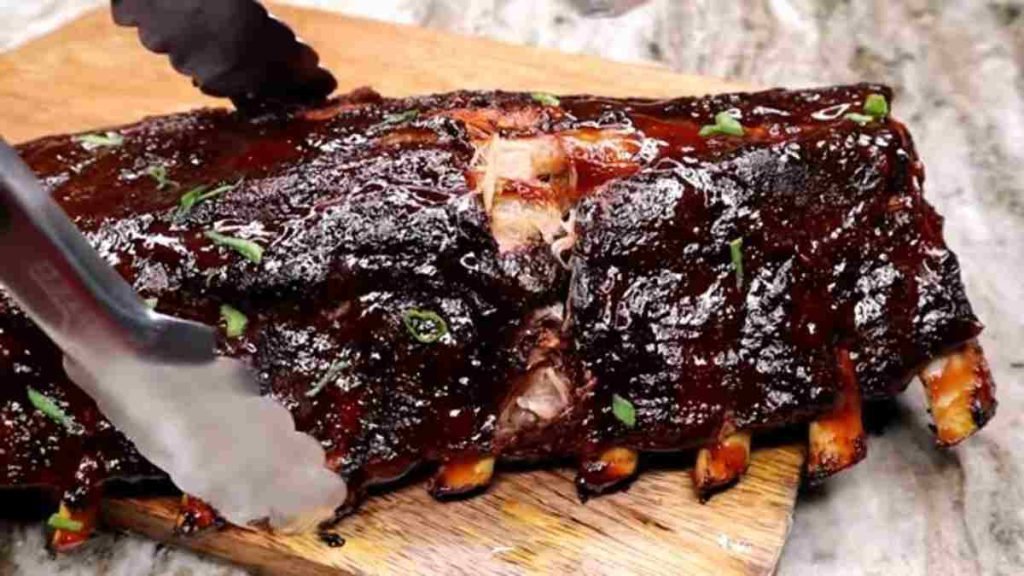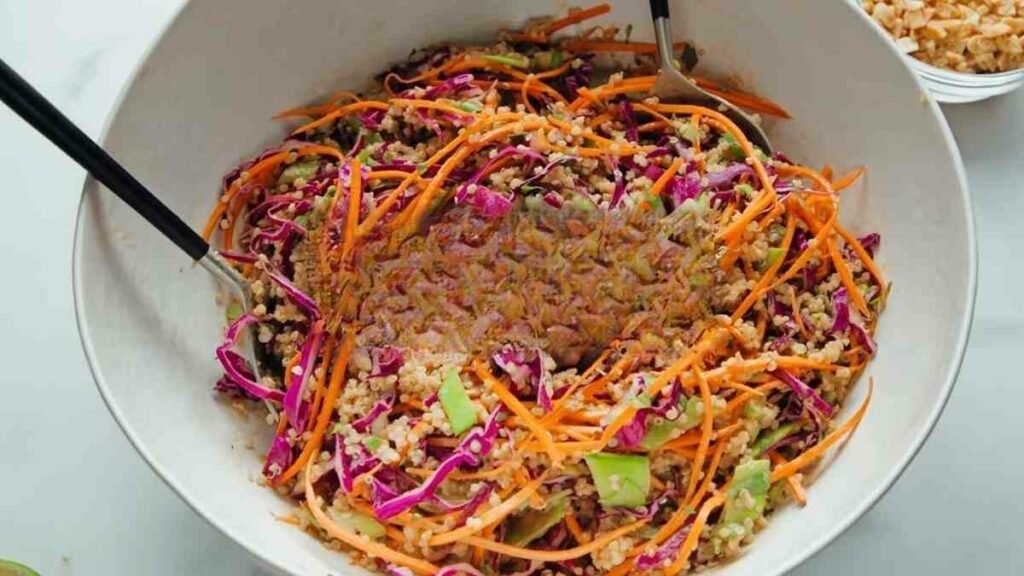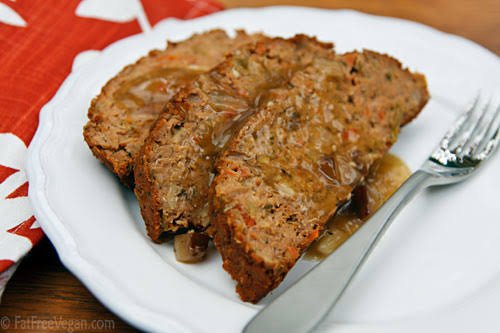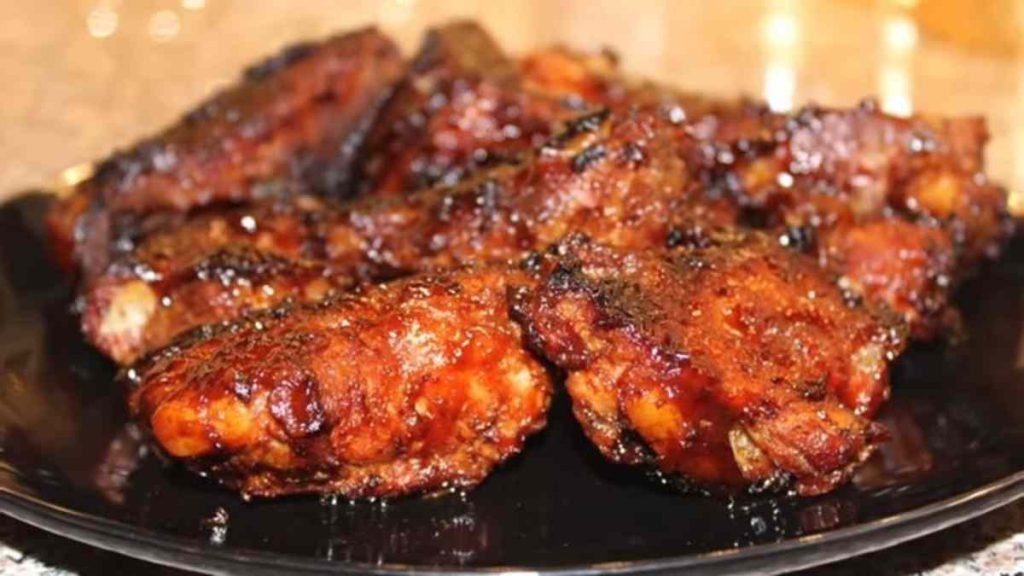Vegan bechamel sauce is popular in the United States. This sauce is a plant-based version of the classic French white sauce. Traditionally, this recipe is made with flour, butter, and milk. It can be served with various dishes to give you a delicious taste.
Bechamel sauce can be traced back to the 17th century when it was created as a base for other sauces. It is commonly used in dishes like lasagna, mac and cheese, and gratins. One of the major selling points of this recipe is its plant-based nature. It makes an excellent meal choice for anyone seeking to reduce animal consumption.
While many households love this recipe, many have problems getting the right taste. If you are one of these people, you have come to the right blog post. In this post, we will give you a step-by-step guide on how to prepare this tasty recipe. We will also discuss essential ingredients and more.
What Are the Ingredients and Equipment You Need to Prepare Vegan Bechamel Sauce?

There are several ingredients you need to prepare the vegan bechamel sauce. Here are some of the ingredients below.
- 2 cups of Non-dairy milk: You need to use non-dairy milk like almond, soy, or oat dairy milk instead of cow’s milk. This provides a creamy texture and nutty flavor to the sauce.
- ¼ cup of All-purpose flour: Flour is used to thicken the sauce
- 3 tablespoons of Vegan butter or oil replaces butter traditionally used in bechamel sauce. It adds richness and flavor to the sauce.
- 2 tablespoons of Nutritional yeast is a critical ingredient used in vegan cooking. It adds a cheesy, nutty flavor to dishes. It is often used to substitute for Parmesan cheese in this recipe.
- ½ teaspoon of Garlic powder: Garlic powder adds flavor to the sauce.
- ½ teaspoon of Salt: Salt enhances the overall flavor of the sauce.
These ingredients are crucial to creating a delicious and creamy vegan bechamel sauce. These ingredients are relatively easy to prepare. It should take around 3 to 8 minutes to prep the ingredients.
List of equipment needed
In addition to the ingredients needed, several kitchen tools or equipment must be on the ground if you want to prepare this tasty recipe. Here are some of the equipment below.
- A medium saucepan: you need this to cook the sauce. A heavy-bottomed saucepan is ideal, as it distributes heat evenly and prevents the sauce from burning or sticking to the bottom.
- Whisk: This is relevant if you want to prepare this recipe. You need a whisk to mix the ingredients and prevent lumps from forming in the sauce.
- Measuring cups and spoons: Accurate ingredient measurement is crucial to creating an excellent sauce. Measuring cups and spoons ensure the right amount of each ingredient is used, resulting in a well-balanced and flavorful sauce.
- Wooden spoon: You need a wooden spoon to stir the sauce while cooking. Wooden spoons are gentle on the pan’s surface and prevent the sauce from sticking to the bottom or sides.
- Blender: You can use a blender to blend the sauce for a smoother texture. Although optional, it creates a velvety smooth, creamy sauce.
A Step-by-Step Guide to Preparing a Perfect Vegan Bechamel Sauce
Although preparing vegan bechamel sauce is relatively easy, many people make mistakes about the steps or the number of ingredients the sauce needs to achieve the right taste. Here is a step-by-step guide to cooking a delicious vegan bechamel sauce. You should note that these steps are adapted from top chefs and culinary experts in the city.
1. Pour your Vegan Butter into a Saucepan and Let It Melt

This is the first thing you must do to prepare vegan white sauce. You should put the butter in a saucepan. Once you have done this, set your stove to moderate or very low heat and allow the butter to melt.
Use your whisk or wooden spoon to stir the butter as it melts constantly. This will make butter melt faster.
2. Add 2 Tablespoons of Flour and Stir

Once the vegan butter is properly melted, add 2 tablespoons of flour to the saucepan. Ensure the stove is set to a minimum temperature to prevent the butter or flour from sticking and getting burnt.
Once you have added the flour, gently stir them with a wooden spoon to ensure they blend. This should form the base for your sauce.
3. Add Milk and Keep Stirring

Adding milk is the next thing you should do once your flour and vegan butter are well blended. Add a little milk to the pan, preferably half a cup of non-dairy milk. The amount of milk you should add largely depends on how thick you want the sauce to be. If you want a thinner sauce, you can add more milk.
Keep stirring the mixture in the pan at the lowest heat. It is very important to regulate the heat as it helps to prevent the mixture from over sticking or getting burnt. You must also keep stirring the mixture to reduce the chances of lumps forming while cooking.
4. Add the Necessary Seasoning

If you have done the above steps, adding the necessary seasonings to the mixture is the next thing you should do. There are different types of seasonings you should add. They include black pepper and salt. There are other seasonings you can add, depending on how you want the taste to come out
When adding seasoning, you must know that you shouldn’t add too much not to ruin the taste of the white sauce. Always add the seasoning with moderation.
5. Add some more Milk and Nutritional Yeast

If you notice that your sauce is becoming too thick, you can go ahead and add some more milk. Ensure you keep stirring to prevent the bottom of the mixture from getting burnt.
Once you have done this, add a little bit of nutritional yeast. Turn on the heat a little bit and let it bubble. Keep stirring while the mixture heats up. You can turn off the heat after 5 minutes if the sauce has thickened to the level you want.
With these steps, preparing this beautiful recipe should take around 10 to 20 minutes. Once it is prepared, you can serve it with various dishes like lasagna, mac and cheese, gratin, and much more.
Tips and Tricks to Cook the Perfect Vegan Bechamel Sauce
There are different tips and tricks you can adopt to cook a great and perfect vegan bechamel sauce. Here are some of the tricks top culinary experts use below.
Whisk or stir continuously: this is one important thing you should do when making vegan white sauce. When making the sauce, whisk or stir constantly to prevent the mixture from burning and forming lumps.
- Use room temperature milk: making a lump-free sauce using cold milk is difficult. This is why using room-temperature milk is important. Let the milk come to room temperature before adding it to the mixture.
- Add the milk gradually: Slowly pour the milk into the mixture while whisking continuously to help prevent lumps from forming. This will allow you to get the perfect texture you desire.
- Adjust the consistency: If the sauce is too thick, add more milk until the desired consistency is achieved. Also, If it’s too thin, let it cook for a little longer to thicken.
- Blend for a smoother texture: For a smoother and creamier texture, blend the sauce in an immersion blender, or transfer it to a blender.
- Adjust the seasoning: Taste the sauce and adjust the seasoning until you get the desired taste. Adding more salt, nutritional yeast, or Dijon mustard enhances the flavor.
By following these tips and tricks, you can make a perfect Vegan Bechamel Sauce that’s creamy, smooth, and full of flavor.
Nutritional Benefits of Vegan Bechamel Sauce
It is typically made with plant-based milk, flour, and a vegan butter substitute. Not only is it a great alternative to traditional bechamel sauce, but it also offers several nutritional benefits.
- Low in saturated fat: Vegan bechamel sauce is typically made with plant-based milk and vegan butter substitute, both of which are low in saturated fat. This makes it healthier than traditional bechamel sauce, usually made with butter and dairy milk.
- High in calcium: Plant-based milk is often fortified with calcium, making vegan bechamel sauce a good source of this important mineral. Calcium is essential for building and maintaining strong bones and teeth.
- Rich in vitamin B12: Some plant-based milk are fortified with vitamin B12, which is important for maintaining healthy nerve and red blood cells. This makes vegan bechamel sauce a good option for vegans at risk of B12 deficiency.
- Low in cholesterol: Since vegan bechamel sauce is made without any animal products, it is naturally cholesterol-free. This makes it a heart-healthy option for those looking to reduce their cholesterol intake.
- High fiber: Vegan bechamel sauce is often made with whole-grain, high-fiber flour. Fiber is important for maintaining a healthy digestive system and can help lower cholesterol levels.
- Low in calories: Vegan bechamel sauce is generally lower in calories than traditional bechamel sauce since it is made with plant-based milk and vegan butter substitutes, which are lower in calories than dairy milk and butter.
- Versatile: Vegan bechamel sauce can be used in various dishes, from lasagna, macaroni, and cheese to casseroles and creamy soups. This makes it a great way to add flavor and nutrition to your meals.
Serving Suggestions for Vegan Bechamel Sauce
Made without animal products, this sauce offers a healthier alternative to traditional bechamel sauce while being just as delicious and satisfying. While it may be a popular choice for vegan lasagna, macaroni, and cheese, there are plenty of other ways to use vegan bechamel sauce.
- Use as a topping for roasted vegetables
- Serve over baked potatoes
- Use in place of tomato sauce on pizza
- Mix with cooked pasta and vegetables for a creamy pasta dish
- Use as a dip for raw vegetables or chips
- Serve over grain bowls or Buddha bowls
- Use as a base for creamy soups
- Make a vegan macaroni and cheese
- Use it as a filling for vegan lasagna or other casseroles.
- Drizzle over toast or bruschetta.
Vegan Bechamel Sauce Is Best Served With
From mac and cheese to lasagna to gratins, vegan bechamel sauce can be used in various dishes to add a rich, savory flavor.
- Vegan mac and cheese: Mix vegan bechamel sauce with cooked macaroni and top with bread crumbs for a delicious vegan mac and cheese. Add roasted vegetables or vegan bacon bits to the mix for an extra twist.
- Vegan lasagna: Layer vegan bechamel sauce with tomato sauce and cooked noodles for a classic vegan lasagna. Add some sautéed mushrooms, spinach, or vegan ground beef for flavor.
- Vegan gratin: Top your favorite vegetables, such as potatoes or cauliflower, with vegan bechamel sauce and breadcrumbs for a delicious vegan gratin. Bake in the oven until golden brown and crispy.
- Vegan croquettes: Mix cooked vegetables, such as carrots or broccoli, with vegan bechamel sauce and bread crumbs. Form into small balls and fry until crispy for vegan croquettes.
- Vegan creamed: spinach Cook spinach in a pan and mix with vegan bechamel sauce for a delicious vegan creamed spinach. Add some vegan parmesan cheese or nutritional yeast for added flavor.
Storage Tips for Vegan Bechamel Sauce
Whether you’re making a big batch to use throughout the week or have leftovers you want to save, knowing how to store this versatile sauce can ensure it stays fresh and ready to use.
- Use Airtight Containers: The best way to store vegan bechamel sauce is in an airtight container. This will keep the sauce from being exposed to air, which can cause it to spoil quickly. Glass containers with a tight-fitting lid or plastic containers specifically designed for food storage work well.
- Label and Date Containers: Be sure to label your containers with the contents and date. This will help you track how long the sauce has been in the fridge or freezer and prevent you from accidentally using the sour sauce.
- Keep in the Fridge: Vegan bechamel sauce can be stored in the fridge for up to five days. Be sure to let the sauce cool completely before storing it in the fridge, and place it in the back of the fridge where it is coldest.
- Freeze for Longer Storage: If you have leftover vegan bechamel sauce that you won’t be used within five days, you can freeze it for longer storage. Pour the sauce into an airtight container or freezer bag, leaving room for expansion, and label it with the contents and date. Frozen vegan bechamel sauce will stay in the freezer for up to three months.
- Thaw and Reheat Carefully: Thaw it in the fridge overnight when ready to use frozen vegan bechamel sauce. Do not microwave or thaw at room temperature, as this can cause the sauce to separate. Once the sauce is thawed, reheat it gently on the stovetop or microwave, stirring frequently to prevent scorching.
Can you Make Vegan Bechamel Sauce ahead of Time and Store it for Later Use?
Absolutely! Vegan bechamel sauce can be made ahead of time and stored for later use. It’s a great idea to make a big batch of sauce throughout the week or freeze it for future meals. Just let the sauce cool completely before storing it in an airtight container in the fridge for up to five days or in the freezer for up to three months.
When ready to use it, thaw it in the fridge overnight and gently reheat it on the stove or in the microwave.
What is a Substitute for Milk in White Sauce?
Many plant-based milk options can be used as a substitute for dairy milk in white sauce. Soy milk, almond milk, oat milk, and coconut milk are all popular options that can replace dairy milk.
Be sure to choose an unsweetened variety and adjust the thickness of the sauce by adding more or less milk as needed.
What Sauce is Similar to Bechamel?
One sauce that is similar to bechamel is velouté. Like bechamel, velouté is a French mother sauce that is made with a roux, but instead of milk, it uses a light-colored stock, such as chicken or fish. Velouté has a lighter color and flavor than bechamel and is often used in dishes such as chicken pot pie and seafood casseroles.
Can I use olive oil instead of vegan butter in vegan bechamel sauce?
You can use olive oil instead of vegan butter in vegan bechamel sauce. However, keep in mind that olive oil has a distinct flavor that may affect the taste of the sauce. If you prefer a neutral flavor, use a mild-tasting canola or vegetable oil instead. Use the same amount of oil as the recipe calls for butter.
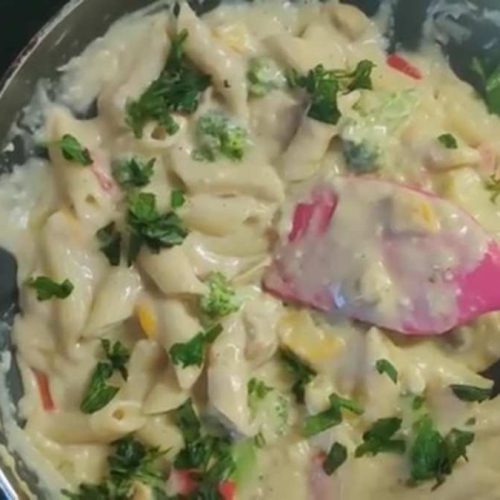
Vegan Bechamel Sauce Recipe
Equipment
- A medium saucepan
- Whisk
- Measuring cups and spoons
- wooden spoon
- Blender
Ingredients
- 2 cups of Non-dairy milk
- ¼ cup of All-purpose flour
- 3 tablespoons of Vegan butter or oil
- 2 tablespoons of Nutritional yeast
- ½ teaspoon of Garlic powder
- ½ teaspoon of Salt
Instructions
- You should put the butter in a saucepan. Once you have done this, set your stove to moderate or very low heat and allow the butter to melt.Use your whisk or wooden spoon to stir the butter as it melts constantly. This will make butter melt faster.
- Once the vegan butter is properly melted, add 2 tablespoons of flour to the saucepan. Ensure the stove is set to a minimum temperature to prevent the butter or flour from sticking and getting burnt.Once you have added the flour, gently stir them with a wooden spoon to ensure they blend. This should form the base for your sauce.
- Adding milk is the next thing you should do once your flour and vegan butter are well blended. Add a little milk to the pan, preferably half a cup of non-dairy milk. The amount of milk you should add largely depends on how thick you want the sauce to be. If you want a thinner sauce, you can add more milk.Keep stirring the mixture in the pan at the lowest heat. It is very important to regulate the heat as it helps to prevent the mixture from over sticking or getting burnt. You must also keep stirring the mixture to reduce the chances of lumps forming while cooking.
- If you have done the above steps, adding the necessary seasonings to the mixture is the next thing you should do. There are different types of seasonings you should add. They include black pepper and salt. There are other seasonings you can add, depending on how you want the taste to come outWhen adding seasoning, you must know that you shouldn’t add too much not to ruin the taste of the white sauce. Always add the seasoning with moderation.
- If you notice that your sauce is becoming too thick, you can go ahead and add some more milk. Ensure you keep stirring to prevent the bottom of the mixture from getting burnt.Once you have done this, add a little bit of nutritional yeast. Turn on the heat a little bit and let it bubble. Keep stirring while the mixture heats up. You can turn off the heat after 5 minutes if the sauce has thickened to the level you want.With these steps, preparing this beautiful recipe should take around 10 to 20 minutes. Once it is prepared, you can serve it with various dishes like lasagna, mac and cheese, gratin, and much more.
Video
Conclusion
It’s creamy texture and rich flavor can take any dish to the next level. With this simple recipe and storage tips, you can make a big batch of vegan bechamel sauce and enjoy it throughout the week or freeze it for later use.
So go ahead and experiment with different dishes – from vegan mac and cheese to lasagna to gratins – and elevate your meals with this versatile and delicious sauce. Remember to store it properly, label and date your containers, and enjoy the magic of vegan bechamel sauce in your favorite recipes.





